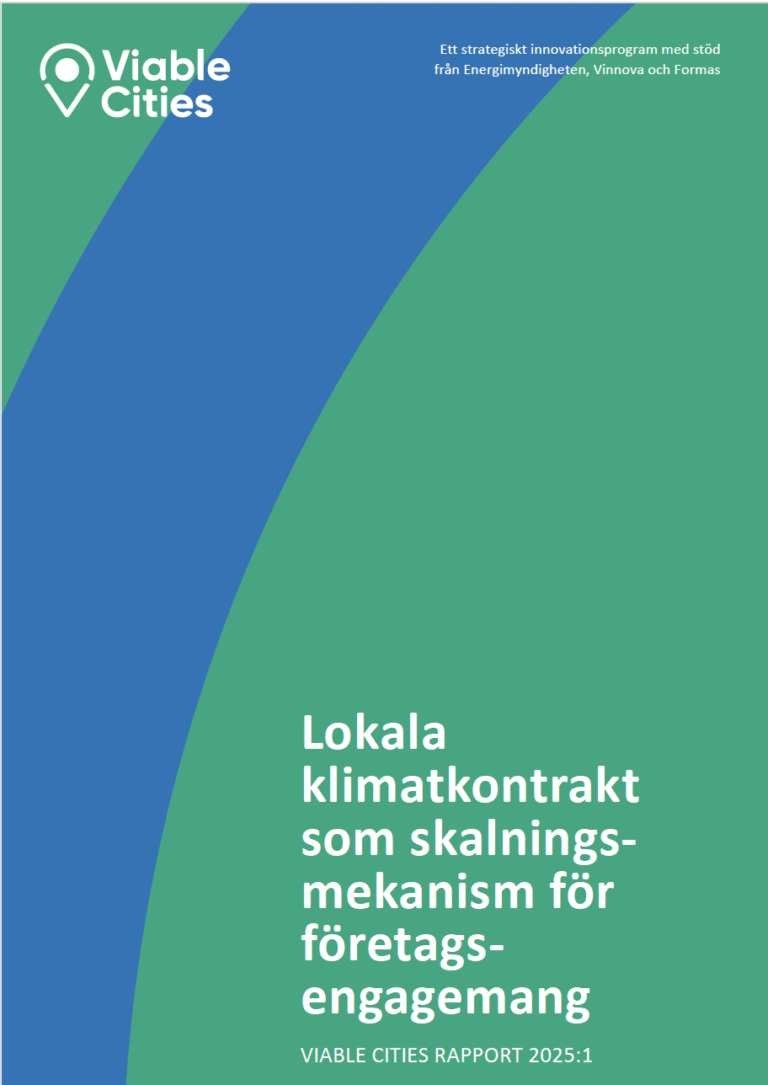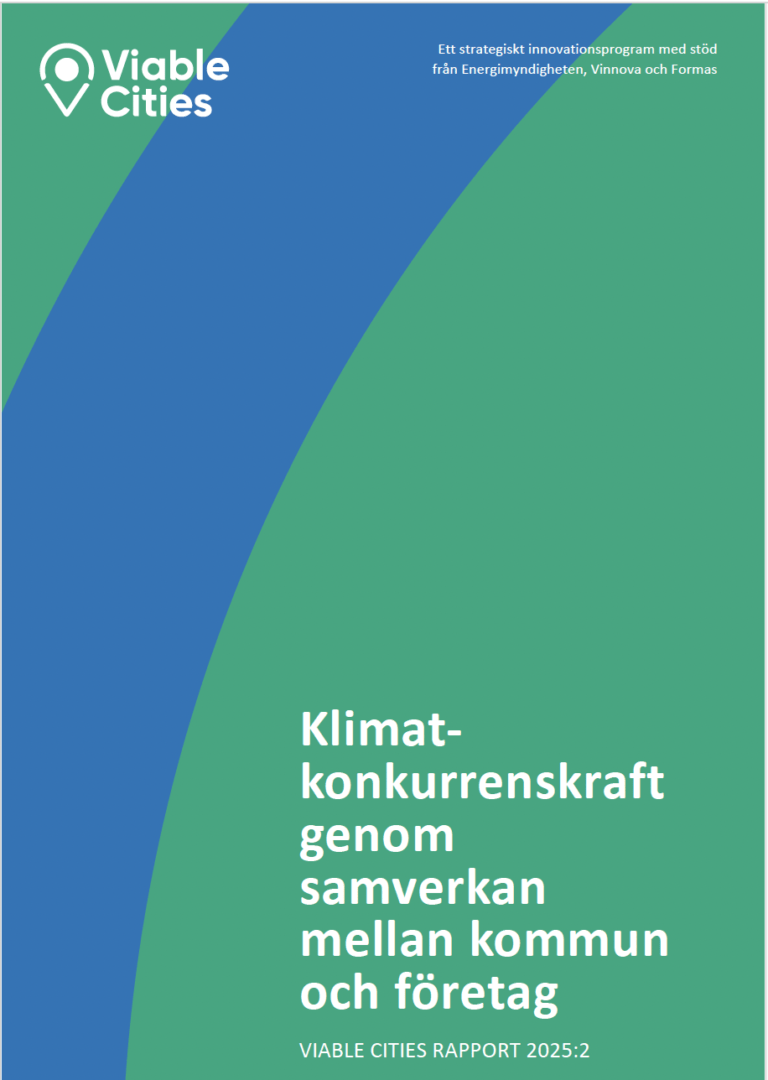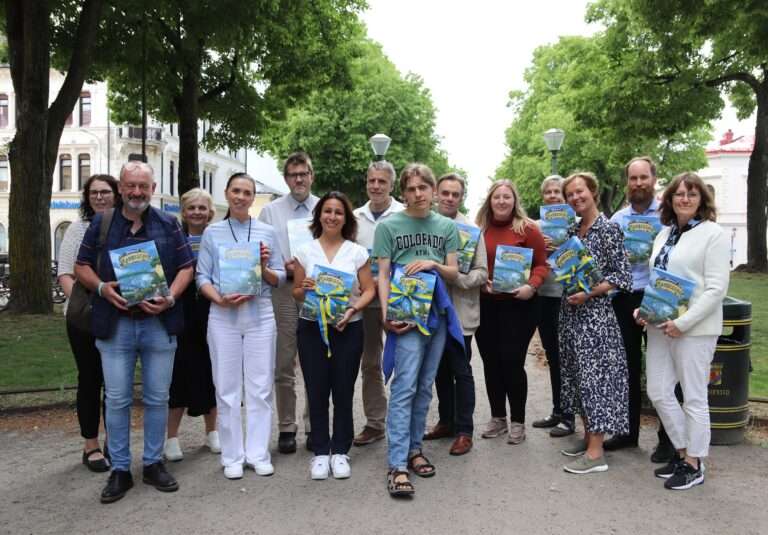A wide range of stakeholders can shape the future of climate-neutral cities by investing where it matters. This fall, Viable Cities has together with the Sweden-US Green Transition Initiative initiated and participated in a series of roundtables and events on aggregated purchasing power for climate-neutral and smart cities. This article presents early findings and suggests the next steps for how cities can leverage private and public stakeholders to drive demand for sustainable solutions.
Aggregating purchasing power in cities – a next step after climate action plans
Viable Cities has succeeded with mobilizing cities all over Sweden and developing new instruments that support the cities. Viable Cities also influenced the EU mission on climate-neutral and smart cities, now including 112 cities. We now need to see mechanisms to deliver on pathways to become climate-neutral. Commitments from public and private buyers can be a key element to accelerate the transition. It is, however, difficult for private and public organizations to purchase goods and services individually in ways that meet the cities’ climate objectives.
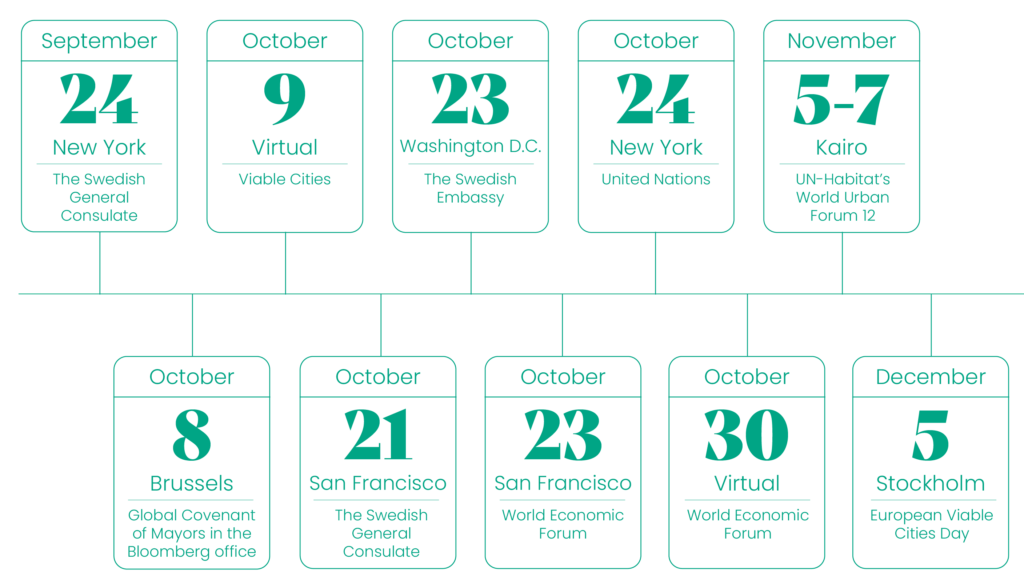
During the Fall 2024, Viable Cities and partners are gathering city representatives and wise experts from many organizations in a series of round tables and events (see full list below). Based on the insights from the many discussions, the ambition is to agree on a first framework for aggregated purchasing power for climate transition in cities.
Harnessing the potential of aggregated purchasing power
Cities function as intricate, adaptive systems where outcomes emerge from the interplay of various stakeholders, policy makers, local government officials, city-owned enterprises, private businesses, and community organizations. What succeeds in one area may fall short in another, even within neighborhoods of the same city. The complexity intensifies when comparing cities across the Global North and Global South.
To effectively address this complexity, cities must embrace experimentation and continuous learning, which are essential for meaningful progress toward shared goals. A unified framework for “aggregated purchasing power for climate” is essential for cities to coordinate these efforts. Such consensus enables cities to compare approaches, draw insights, and establish actionable guidelines. Employing shared frameworks, including scales and matrices, provides a structured way to map strategies, fostering collaborative learning and adaptation across diverse contexts.
Landscape of Urban Climate Finance – the potential of purchasing power globally
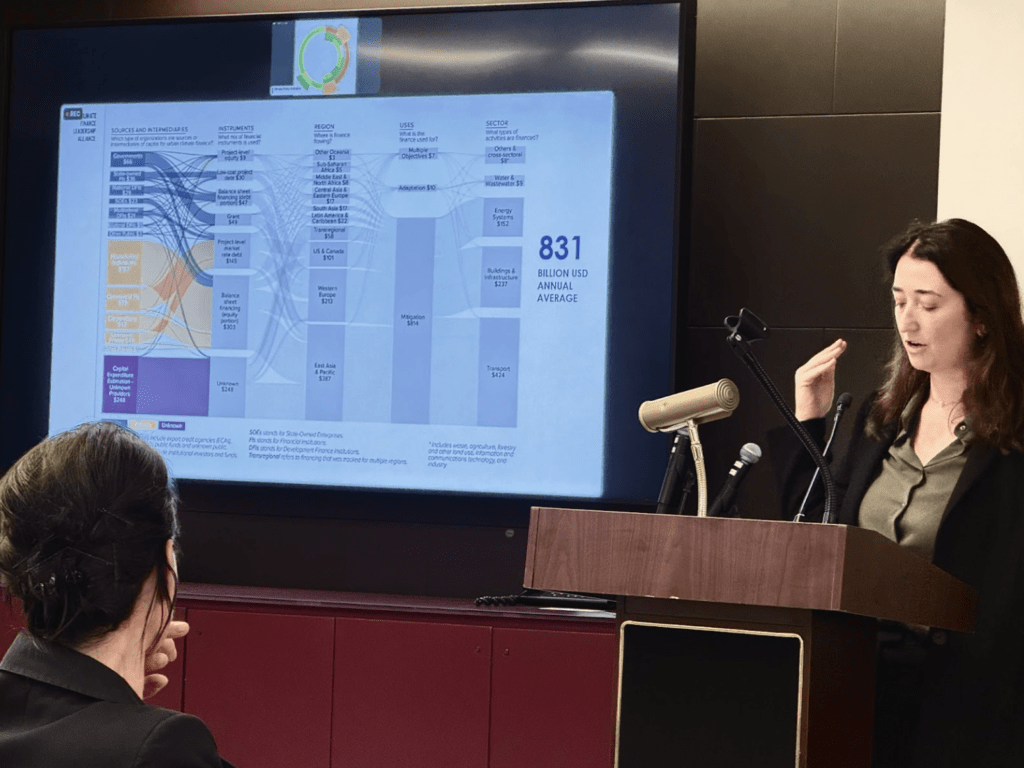
The Cities Climate Finance Leadership Alliance (CCFLA) provides an overview of the complex landscape of urban climate finance. In their latest report, the State of Cities Climate Finance, they estimated the amount of finance lacking in cities for climate mitigation to be $4.3 trillion per year by 2030.
According to the World Economic Forum, city governments procure $6 trillion annually – around 8% of the world’s GDP. There is huge potential to redirect public funding to be used where it matters. At the same time, the local government procurement process is often problematic and typically only represents 20% of the necessary investments for a city to become climate-neutral. This means that there is also a need for a convening power to aggregate purchasing both between cities and with all actors, both public and private, within each city.
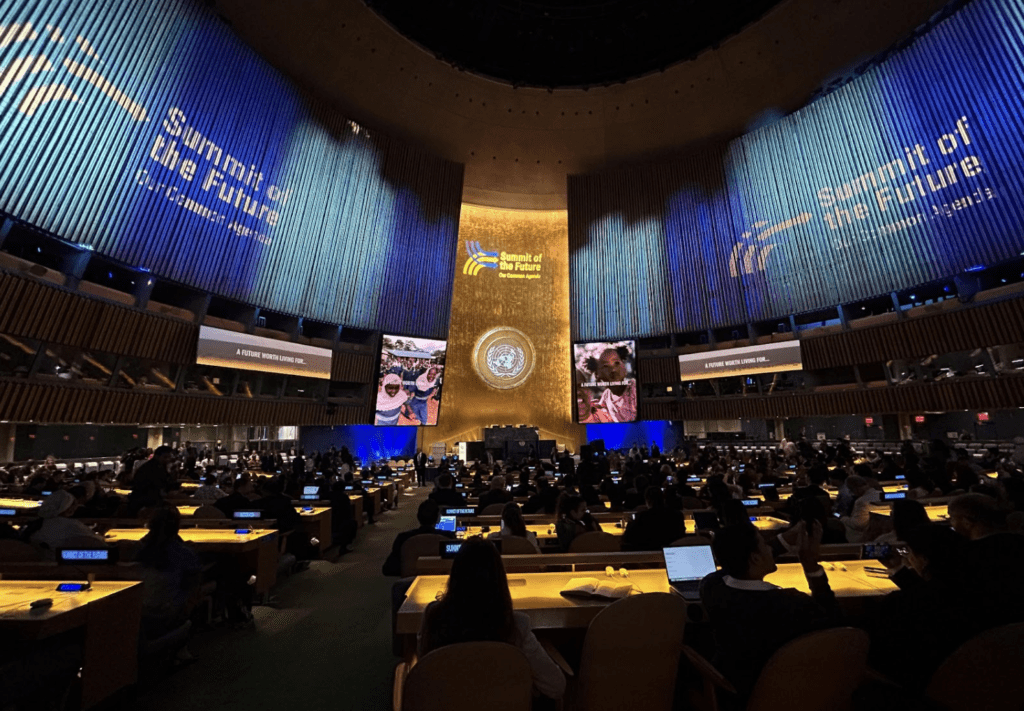
At the United Nations Summit of the Future in New York on 22-23 September, the document “Pact for the Future” was adopted by the UN member states. The document includes an action on accelerating the reform of international financial architecture to mobilize additional funding for the Sustainable Development Goals and to respond to the needs of developing countries. Developing countries require enhanced access to financing from all sources to achieve the Sustainable Development Goals. Flows of capital to many developing countries are falling, and more capital is leaving many developing countries than is coming in.
When creating a framework, it will be of the essence to make sure that it is as valuable for the Global South as it should be for the Global North.
Key scales for mapping aggregated purchasing power approaches
To understand different approaches to aggregated purchasing power, several key scales can be used to map strategies and guide discussions. These scales are designed to capture the various dimensions of aggregated purchasing power, allowing cities to assess their current practices and identify strategic opportunities for collaboration.
- Coordination Type
- Group Buying: Multiple buyers collaborate to procure solutions together, leveraging economies of scale for cost reduction and greater impact.
- Scalability Integration: Procurement is structured to stimulate scaling beyond the initial buyers, encouraging more cities or organizations to adopt the solution over time.
- Level of Coordination
- Intra-city Coordination: Collaboration occurs across various departments or municipal companies within a single city.
- Inter-city Coordination: Efforts are coordinated between cities, either regionally or internationally, to align demand and influence markets on a larger scale.
- Top-Down vs. Bottom-Up Approach
- Top-Down: Driven by centralized decision-making or policy mandates, setting procurement priorities and standards for broader adoption.
- Bottom-Up: Initiated by local actors, such as individual departments, communities, or smaller organizations, with flexible and adaptive strategies.
Mapping approaches using the purchasing matrix
The following matrix illustrates how aggregated purchasing power can be mobilized across different scenarios, considering whether the solutions are new or existing, and whether they target established or new markets:
| Existing Market | New Market | |
| Existing Solution | Leveraging Market Power with Group Buying | Expanding Market Reach with a Scalable Approach |
| Multiple buyers collaborate to procure established solutions, benefiting from economies of scale. | An initial buyer introduces an existing solution into new contexts, creating a model for others. | |
| Example: Joint purchasing of electric vehicles by multiple cities. | Example: A city adopts renewable energy solutions, spurring regional uptake. | |
| New Solution | Stimulating Adoption Through Early Collaboration | Creating a New Market with Lead Buyer Strategy |
| Early-stage collaboration among buyers to support innovations not yet market-ready. | A lead buyer initiates procurement for a new solution, with contracts allowing subsequent buyers to join, or integrating scalability through venture logic criterias in the process. | |
| Example: Cities jointly pilot innovative battery storage systems. | Example: A city invests in hydrogen infrastructure, planning for regional expansion. |
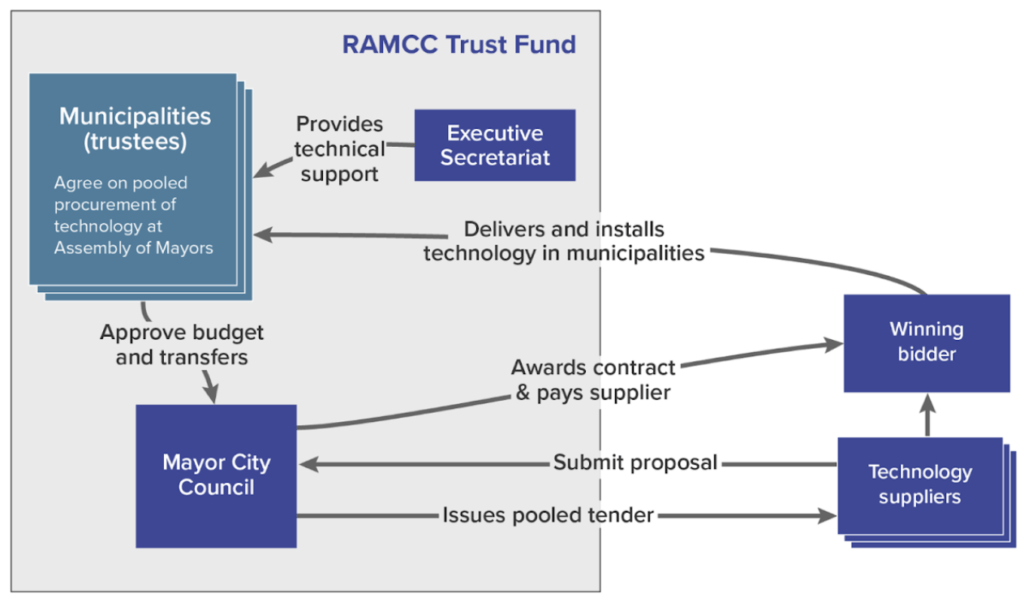
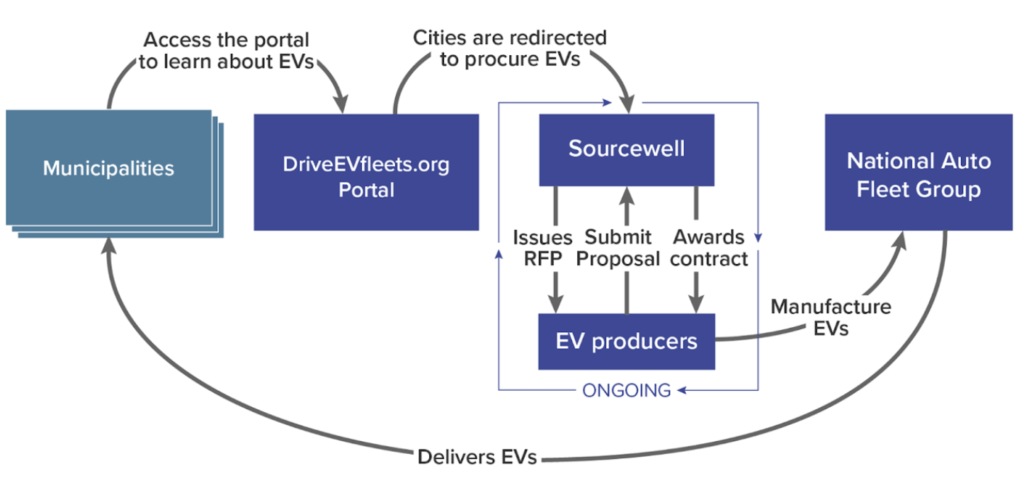

Priscilla Negreiros is an Associate Director of the Climate Policy Initiative and Lead for the Cities Climate Finance Leadership Alliance (CCFLA). She shows that a key benefit for aggregated purchasing power is achieving economies of scale leading to lower costs while improving access to technologies or services. Among the challenges Priscilla highlighted was that it may require long-term political commitments, which can wane over time due to election cycles.
Insights from events and roundtables in October

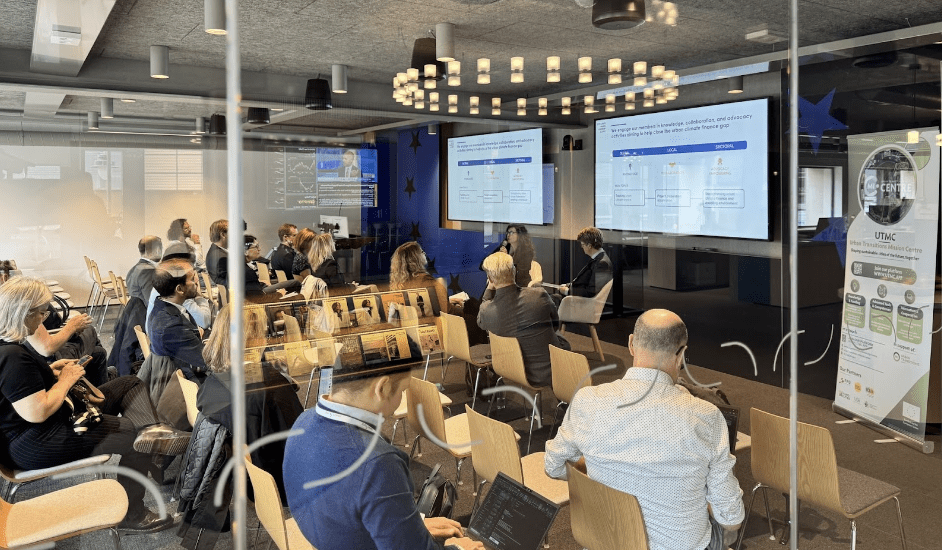
Benjamin Jance IV – Head of Research and Innovation at the Global Covenant of Mayors particpated in an en event on October 8 in Brussels. Photo credit: Global Covenant of Mayors and Mission Innovation UTM.
At the Global Covenant of Mayors Brussels office, during a side event to the Mission Innovation UTM Global Innovation Summit 2024 on October 8, Benjamin Jance IV – Head of Research and Innovation at the Global Covenant of Mayors received the question whether cities are the right catalysts for purchase of innovative solutions. He replied “Yes” and went on to say that “Cities are really important to encourage that action. National governments might not be willing to take on certain types of projects at national scale, you have local governments that can disperse that.”

During a roundtable dialogue in San Francisco on October 21, participants from The State of California and cities of California, the importance of a just transition was stressed; while transitioning to climate-neutral cities must at the same time benefit all citizens, including in vulnerable communities. By integrating social equity into climate planning, the transition can also promote actions that support job creation, social inclusion, and equitable access to sustainable infrastructure.
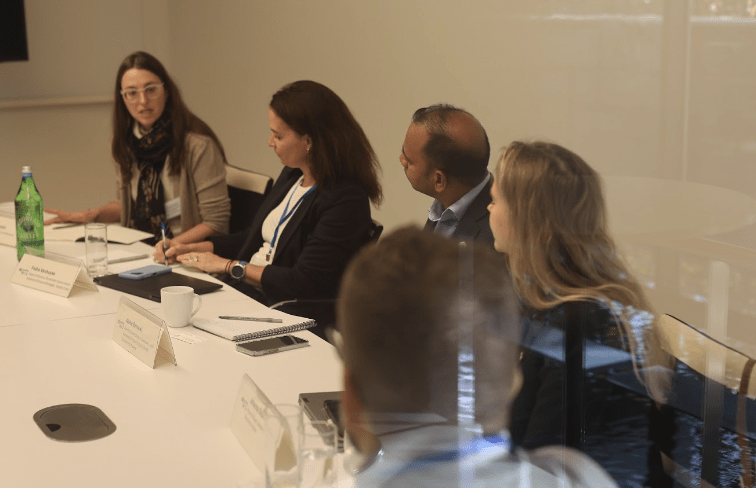
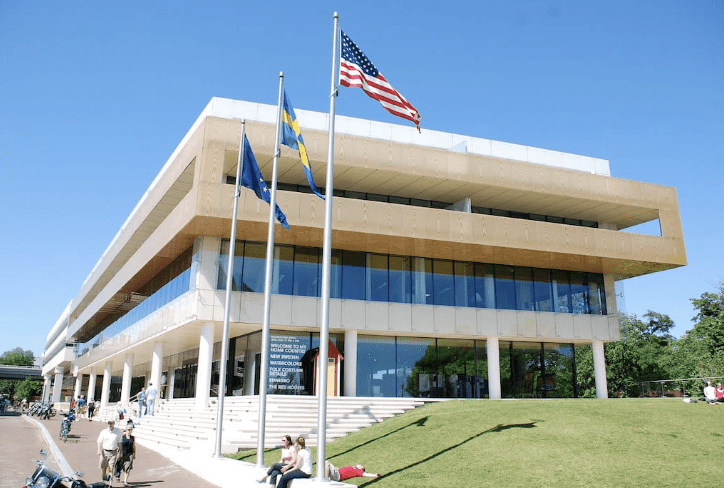
Roundtable at the House of Sweden, Washington D.C. on October 23. Photo credit: Swedish Embassy, Washington D.C. and Adam Fagen (CC BY-NC-SA 2.0).
A key topic at the roundtable at the House of Sweden, Washington D.C. on October 23, was the need for collaboration across sectors such as transport, water, and energy, and across different levels of government to drive effective solutions and access more funding streams.

At the World Economic Forum’s Urban Transition Summit in San Francisco on October 23, data was presented that city governments procure $6 trillion annually – around 8% of the world’s GDP. There is huge potential to redirect public funding to be used where it matters.
Implementation of the framework, starting in December
Using these scales and the matrix, cities can map their current procurement strategies and identify opportunities for enhancing their approaches. This structured method allows for a comparison of different strategies, highlighting potential pathways for scaling, coordination, and innovation. By understanding where different initiatives fall within these dimensions, cities can better align their aggregated purchasing efforts with broader climate goals, while also sharing insights and learning across diverse urban contexts. Key questions to address in creating the framework include understanding the various forms and governance models of aggregated purchasing power, identifying successful examples and lessons from different regions, and evaluating cities’ capacity to adopt innovative solutions. Additionally, the framework must consider strategies for de-risking investments, mechanisms for scaling and securing future commitments, and the financial capabilities required for cities to effectively leverage their purchasing power in climate action.
When moving forward with the implementation of the framework, it will be of the essence that the following aspects are considered:
- A standard for showing committed investments and purchases towards climate-neutrality, adding up to an aggregated number for each city.
- Various flexible scales that allow for the addition or removal of scales based on the identified key aspects.
- Clarity on how the stakeholders can save money by buying green.
Viable Cities wants to work with partners to find the answers to these key questions to inform the development of a model for what aggregated purchasing power for climate in a city would mean.

Background
Viable Cities is Sweden’s government innovation program that supports cities becoming climate-neutral as early as 2030. Currently, 23 cities are part of Viable Cities; more than 40% of the population lives in these cities. The goal is not only zero emissions but also that everyone should be able to live a good life within planetary boundaries. Viable Cities’
“Climate City Contracts 2030” is a pioneering approach that brings together local authorities, national agencies, and private actors to co-create and commit to a shared vision for climate-neutral cities by 2030. By fostering multi-level governance, these contracts ensure alignment of local actions with national and international climate goals, enhancing coordination and resource allocation across different levels of government. The success of Climate City Contracts lies in their ability to integrate multiple stakeholders, from local governments to private sector partners, under a unified plan that combines policy, innovation, and investment. By having clear goals, strategies, and funding commitments, these contracts serve as a model to inspire other cities globally, showing how collaborative, place-based solutions can accelerate the transition to a sustainable urban future.
Collaboration between the public and the private sector in funding urban development is crucial for building sustainable cities. While the use of public funding ensures addressing key social and environmental benchmarks, private funds can push the limits of the development to a whole new level. Public-private partnerships and other types of collaborations combine both sectors to achieve more comprehensive and effective urban solutions.
Viable Cities has shown the way and inspired the EU’s mission of 100 climate-neutral cities by 2030, an important step towards making all cities climate-neutral. But we can only achieve the mission together, and that is why we want to work with partners around the world to better understand how the cities can act as a catalyst and purchasing power as a tool.
Part of the commitments within the climate city contracts is to present a climate investment plan for the entire city. Generally speaking, the local government budget is just a small portion of the entire city budget, which also includes investments from the private sector.
In the event in Brussels on October 8th, Benjamin Jance IV – Head of Research and Innovation at the Global Covenant of Mayors mentioned that before the event he searched in “Google Scholar” for “public procurement cities”. He mentioned that the results from the first two pages are all Global North cases, with more than 50% of those examples either from Sweden or from Scandinavia more broadly. He said that the leadership is there, but stressed how important it is to include a Global South perspective through, for example, the Cities Climate Finance Leadership Alliance.
Viable Cities collaboration with the Sweden-US Green Transition Initiative paves the way for Sweden to increase global cooperation to contribute to worldwide knowledge sharing.
22 September (in conjunction with the Summit of the Future, hosted by the United Nations)
24 September, New York (hosted by the Swedish General Consulate of New York in conjunction with Climate Week NYC)
8 October, Brussels (hosted by Global Covenant of Mayors in Conjunction with Urban Transitions Mission Global Innovation Summit)
9 October, Virtual (hosted by Viable Cities)
21 October, San Francisco (hosted by the Swedish General Consulate in San Francisco)
23 October, Washington D.C. (hosted by the Swedish Embassy in Washington D.C.)
23 October, San Francisco (hosted by the World Economic Forum in conjunction with Urban Transformation Summit)
24 October, New York (hosted by the United Nations)
30 October, Virtual (hosted by World Economic Forum)
5 and 7 November, Cairo (in conjunction with UN-Habitat’s World Urban Forum 12)
5 December, Stockholm (in conjunction with European Viable Cities Day)
AtkinsRéalis
Business Sweden
California Governor’s Office
Carbon Neutral Cities Alliance
Centre for the Fourth Industrial Revolution
Cities Climate Finance Leadership Alliance (CCFLA)
Climate Investment Funds
Climate Mayors
Climate Policy Initiative
Consulate General of Sweden, San Francisco
Consulate General of Sweden, New York
First Movers Coalition
Global Covenant of Mayors
Global Environment Facility
Global Urban Development
Habitat for Humanity
Hines
Kearney
Mori Memorial Foundation
Nordic Innovation House
Oliver Wyman
San Francisco Environment Department
Stockholm Environment Institute
Sustainable Purchasing Leadership Council
Sweden-US Green Transition Initiative
Swedish Energy Agency
UN-Habitat
University of California, Berkeley
Viable Cities
Vinnova, Sweden’s innovation agency
World Economic Forum
World Resources Institute
WRI Ross Center for Sustainable Cities
Zero Emissions Innovation Centre
…and many more
Questions or interested to participate in the further development? Reach out to Olle Dierks.
